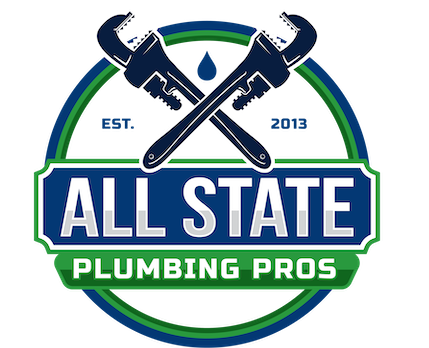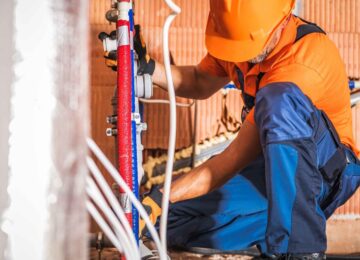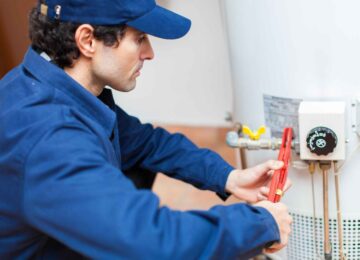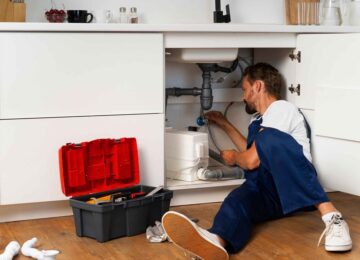Water tank plumbing is the process of connecting a storage tank to your home or business water system to ensure steady, safe, and reliable water flow, which also includes how to drain the tank efficiently. Whether you rely on a well water tank, a rainwater collection system, or a backup storage tank, proper plumbing helps prevent leaks, water pressure issues, and costly damage. For homeowners in Fairfield County, CT, and Westchester County, NY, professional water tank plumbing is essential, especially when seasonal weather or aging systems put the water supply at risk.
All State Plumbing Pros provides expert water tank plumbing services for both residential and commercial properties. With licensed plumbers available 24/7, we handle installation, repairs, and emergency support so your pressurized water system works reliably when you need it most.
What Is Water Tank Plumbing?
Water tank plumbing is the process of connecting a water storage tank to your plumbing system to provide clean, reliable water. This involves installing pipes, valves, fittings, and pumps that allow water to flow safely to taps, showers, and appliances using gravity.
This guide focuses on fresh water tanks only and does not apply to gray or black water tanks.
Note: When installing top-connected tanks, it is important to ensure all components fit properly for effective integration of tanks, fittings, and accessories. Always connect to the correct tank port, such as the discharge port or drain port, for efficient water flow. If an outlet or port is not being used, use a plug to seal it and prevent leaks. For added convenience, you may choose to purchase a pre-plumbed tank with extra ports for easy water supply connection.
Proper plumbing ensures:
- Steady water pressure for household or business use
- Protection from leaks and sediment buildup
- Safe delivery of drinking water without contamination risks
In Fairfield County and Westchester County, many homes rely on well pumps and storage tanks to supply fresh water. A licensed plumber makes sure your system complies with local codes, is equipped with the right materials (such as PVC pipes, hose clamps, and bulkhead fittings), and operates efficiently for years.
Types of Water Tanks and Plumbing Options
Not all water tanks are the same, and the way they’re plumbed varies depending on type, location, and purpose. Choosing the right setup prevents problems and improves long-term efficiency.
Above-Ground vs Underground Tanks
Above-ground tanks are easier to install and maintain, but can take up space in your yard. Underground cisterns protect water from sunlight, temperature fluctuations, and debris, but require more complex plumbing during installation. A plumber ensures the correct hole size, seal, and piping to prevent leaks.
Rainwater Tanks
Rainwater tanks are often used for irrigation, laundry, or even drinking water when properly filtered. Plumbing a rainwater tank involves fitting strainers, valves, and pipes that connect the tank to your home’s water system. Safe installation prevents contamination and ensures compliance with water quality standards.
Well Water Tanks
Well water tanks rely on pressure systems to deliver water to your faucets. Water is also delivered to fixtures like your shower, ensuring consistent pressure during use. A plumber connects the pressure tank, pump, and fittings to ensure a steady flow of fresh water to the sink. The pressure tank helps control water pressure fluctuations, maintaining reliable performance throughout your plumbing system.
This setup is common in Danbury, Ridgefield, and other CT towns where municipal water isn’t available. A well pressure tank also reduces strain on the pump and system components, helping to prevent damage and extend the life of your water system. Proper installation and maintenance of your well pressure tank can enhance the efficiency and stability of your water pressure system.
How to Plumb a Water Tank
Plumbing a water tank is a technical process that requires precision, the right materials, and knowledge of local codes. While some homeowners attempt DIY, even small mistakes can lead to leaks, low water pressure, or unsafe drinking water.
Here’s a simplified version of the steps a licensed plumber follows:
-
Choose a Location
Select a stable site with access to existing plumbing and proper drainage.
-
Install Tank Fittings and Valves
Installing a bulkhead fitting is a simple process involving a few straightforward steps to ensure a secure connection. Hose clamps are used to secure hoses to fittings and prevent leaks. PVC pipes should be measured and cut to fit the system, ensuring proper integration. The correct port must be selected for each connection, and a plug may be used to seal any unused outlet or drain port. Hoses are used to connect the tank to the water supply or drainage system.
-
Connect Pumps and Piping
A valve is installed to control water flow within the system. A tap can be installed at the lowest point of the system for easy water access. All pipe connections must be secure to prevent leaks. The system can be hooked to a city water supply, and a pressure regulator should be used to prevent damage from high city water pressure.
-
Test Pressure and Flow
The plumber measures the pressure point at which the system activates to ensure proper operation. Testing also ensures there are no leaks in the system.
-
Seal and Insulate Connections
After installation, the tank is filled with water, and the fill process is checked for proper operation. This includes observing how water enters the tank and is distributed through the system. Pipes and fittings are sealed to prevent leaks and insulated for protection against cold weather.
Caution: A common mistake is forgetting to turn off the water pump or city water supply, which can lead to flooding or water damage. Always double-check all connections and shut-off points during installation and maintenance.
Common Water Tank Plumbing Problems and Repairs
Like any plumbing system, water tanks face issues over time. Knowing the most common problems helps you spot them early before they escalate into emergencies.
Frequent water tank plumbing problems include:
- Leaks around fittings or pipes are caused by improper seals or corrosion.
- Pressure loss or weak water flow is often linked to faulty pumps or clogged pipes. Pressure fluctuations can cause strain on the pump and system components, potentially leading to premature failure.
- Frozen pipes during CT winters can lead to cracks or bursts.
- Sediment buildup that reduces water quality and clogs faucets and sinks. Clogged faucets and sinks are common symptoms of sediment accumulation.
- Contamination risks if fittings or filters aren’t maintained.
When these problems occur, quick action is critical. All State Plumbing Pros provides 24/7 emergency plumbing across New Milford, Wilton, and Westchester County to restore water flow and prevent damage.
Cost of Water Tank Plumbing Services
Water tank plumbing costs vary depending on the size of the tank, the complexity of the installation, and the type of system. For example, underground cisterns cost more to install than above-ground tanks, while minor repairs are less expensive than full replacements.
General ranges include:
- Installation: Higher upfront cost due to labor, excavation, and fittings
- Repairs: Less expensive but depend on parts, leaks, or pump issues
- Maintenance: Regular inspections and cleaning keep costs predictable
In Fairfield County and Westchester County, homeowners can expect fair, transparent pricing when working with All State Plumbing Pros.
Why Hire a Licensed Plumber for Water Tank Plumbing?
A licensed plumber ensures your tank system is safe, efficient, and compliant with local codes. While DIY might look simple, plumbing a water tank requires specialized tools and knowledge of pressure systems.
Benefits of hiring a professional include:
- Proper installation that prevents leaks and contamination
- Compliance with CT and NY plumbing regulations
- Long-term efficiency with fewer repairs
- Emergency support if something goes wrong
Water Tank Plumbing in Connecticut and New York
Homes and businesses across Fairfield County, CT, including Danbury, Ridgefield, and Wilton, and throughout Westchester County, NY, rely on safe, efficient water tank plumbing. From new installations to emergency repairs, All State Plumbing Pros has built a reputation as a trusted family-owned company that delivers 24/7 service with care and professionalism.
Conclusion
Water tank plumbing plays a critical role in maintaining a safe, efficient water supply for your home or business. From choosing the right tank to proper installation, ongoing maintenance, and emergency repairs, every step requires precision and expertise.
If you’re dealing with water tank leaks, low pressure, or need a new installation, don’t wait until the problem gets worse. At All State Plumbing Pros, our licensed plumbers are on call 24/7 to serve homeowners and businesses across Connecticut and New York. From emergency repairs to full system replacements, contact us today for reliable water tank plumbing you can count on.
FAQs
What is a water tank in plumbing?
A water tank in a plumbing storage container designed to hold and supply fresh water to a home or business. It connects to your plumbing system through pipes, valves, and fittings, ensuring steady water pressure and reliable flow. Tanks commonly used for well systems, rainwater collection, or as a backup supply during outages.
How to connect pipes to a water tank?
Connecting pipes to a water tank requires installing bulkhead fittings, valves, and sealed joints that link the tank to your plumbing system. A pump or pressure system regulates water flow to taps and fixtures. For safety and code compliance, a licensed plumber should handle the connections to avoid leaks or contamination.
How to properly install a water tank?
Proper water tank installation involves choosing a stable location, preparing the base, fitting valves and pipes, and connecting the system to your water supply. The black tank must be level, securely sealed, and protected from debris or freezing temperatures. Hiring a licensed plumber ensures the system meets local regulations and delivers reliable water pressure for everyday use.
How much does a 3,000-liter tank cost?
The cost of a 3,000-litre water tank depends on the material, brand, and installation requirements. On average, prices may range from several hundred to over a thousand dollars, with plastic underground tanks typically costing more than above-ground options. For homeowners in Connecticut and New York, All State Plumbing Pros provides transparent estimates that include both the tank and professional installation.

![Water Tank Plumbing: Installation and Repairs Guide Water tank plumbing is the process of connecting a storage tank to your home or business water system to ensure steady, safe, and reliable water flow, which also includes how to drain the tank efficiently. Whether you rely on a well water tank, a rainwater collection system, or a backup storage tank, proper plumbing helps […]](https://allstateplumbingct.com/wp-content/uploads/2025/09/water-tank-plumbing-750x420.jpg)



Leave a Reply